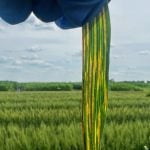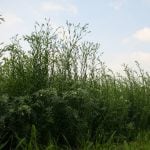
Tag Archives disease resistance

Researchers chase resistance to bacterial leaf streak in Prairie cereals
With symptoms that mimic tan spot and rust, BLS often goes unnoticed

European seed firms hope lupins catch on in Prairie pulse rotations
Lupin could be a formidable feed option with its amino acid and fibre content

Ongoing research on chickpea-flax intercrop shows the mix reduces ascochyta blight
The intercrop works for reducing the disease, but Michelle Hubbard, an Agricutlure and Agri-Food Canada researcher, is still working on the why

Verticillium may undermine canola blackleg resistance
Verticillium stripe may compromise blackleg resistance protection in canola, new research out of Manitoba suggests

Steps to stop blackleg in canola
Agronomists and canola growers have many proven steps to manage blackleg disease in canola. Genetic resistance has been an extremely effective tool, and will remain so — as long as that resistance matches the blackleg races in a field

Managing against fusarium takes a multi-part strategy
Tweaking fungicide timing could provide farmers with better control

Changing weather, changing varieties
With growing conditions in flux, adaptability is a consideration for soybean developers

Phytophthora’s Prairie evolution
For Manitoba the ‘honeymoon’ is ending as soy diseases such as phytophthora root rot arrive

New tools clear paths for canola’s next steps
Gene editing, artificial intelligence bring new efficiencies to the process

How a worldwide destructive cereal disease problem was solved in Alberta
In the story of ergot in wheat, barley and oats, the answer was simply 'copper'


